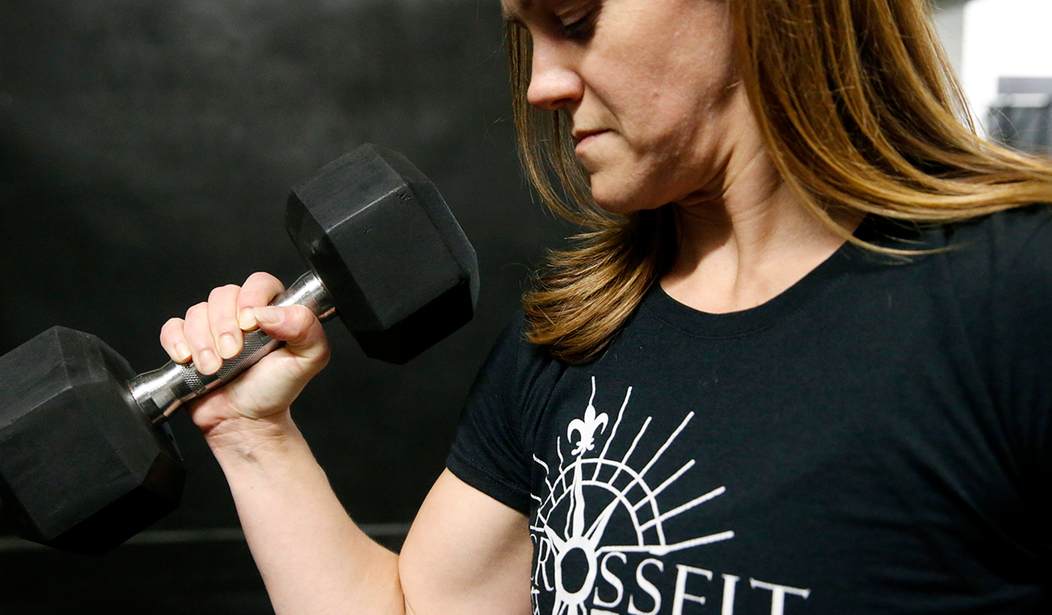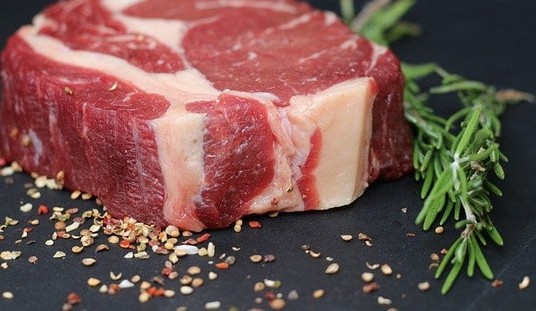I’m 58. Granted, I’m pretty beat up these days. I’ve had my share of injuries, the result of having lived a rather careless active life outdoors, on horses, motorcycles, bicycles, and the field of competition. People my age who have not spent their years in a chair have an accumulation of aches and pains, most of them earned the hard way. And for us, beat up or not, the best way to stay in the game is to train for strength.
The conventional wisdom is that older people (ah, the term sticks in the craw) need to settle into a routine of walking around in the park when the weather is nice, maybe going to the mall for a brisk stroll in the comfort of the air conditioning, or a nice afternoon on the bicycle, checking out the local retirement communities — at a leisurely pace, of course. For the more adventurous, a round of golf really stretches out the legs. Maybe finish up with a challenging game of Canasta. Your doctor will tell you that this is enough to keep the old ticker ticking away, and should you choose to rev the engine like this every day, you’re doing everything you need to do to maintain the fantastic quality of life enjoyed by old people at the mall.
Standards, unfortunately, are low. Your doctor often assumes that he’s also your fitness consultant. When you get sick, go to your doctor. When you are deciding what to do to extend your physical usefulness, how about taking a different approach than asking his permission to get up off your ass? How about asking yourself whether your current physical condition is as good as you’d like it to be? If it’s not, what would be the best way to improve it?
I’m pretty sure you know that walking around in the mall — sometimes more accurately referred to as “shopping” — is not capable of making anything change for the better. One of the benefits of being a little older is that most of us have had the opportunity to learn that all major improvements come with a price tag. There Ain’t No Such Thing As A Free Lunch. Reversing the entropy takes a significant expenditure of energy, and a brisk walk just isn’t significant. Sorry.
A daily brisk walk, or a jog, or even a 9-minute pace for three miles can produce enough cardiorespiratory stress to keep your heart and lungs in pretty good shape, true enough. (This of course means that it’s not a terribly difficult thing to do.) For most doctors and for many of their patients, the calculation stops there. But not dying of a heart attack is really just a small part of the much larger picture of an active life well-lived. You interact with your environment using all the muscles of your body, not just your heart and diaphragm, and strength is the difference between the things you could do when you were 25 and the things you can’t do now.
Strength — as well as a tolerance for childish nonsense — is the thing we all lose as we age. Squatting down, standing back up, putting things overhead, pulling things up the driveway, loading the groceries, wrestling with the grandkids, teaching the dog who’s boss, mowing the yard, putting the broken lawnmower in the truck again: simple physical tasks we took for granted years ago are often problems for older, weaker people, as well as a source of potential injury that can be expensive and debilitating.
For most of us, this happens because of inactivity. If you do not use your muscles to produce enough force to maintain their ability to do so, it shouldn’t be surprising that they become less capable of doing it. And walking, running, riding a bicycle — physical activities whose performance is not limited by strength for even moderately active people — cannot increase or even maintain strength.
This is important to understand: physical stress in the presence of sufficient recovery (in theory, the stress shouldn’t kill you) produces adaptation. The adaptation is specific to the stress. That’s why sunshine on your arms makes your arms brown, not your feet; the shovel makes your hands callused, not your face. So running produces better endurance, not better strength, and if you want to get stronger you have to stress your ability to produce force, since that’s what strength is. Running is good for the heart and lungs, and that’s about all. A proper strength program is good for the heart, lungs, and everything else too.
Even those of us who have trained for strength for decades have noticed a downhill slide in our physical capacity. Our ability to produce power — the ability to produce force quickly and explosively — diminishes with age whether we train it or not. This is due to changes in the motor neurons and the muscles that control the explosive parts of the system, and even training cannot completely halt the process. The ability to react quickly with our bodies — to a loss of balance, a rapid change in position, or a falling jar of mustard — is the way power is displayed in everyday situations. Strength training should involve some explosive work too, but just maintaining strength preserves power capacity.
The loss of strength also means the loss of muscle mass. Muscle tissue is not merely the stuff that generates force and moves us around. Muscles, in a very real sense, are glands that actively participate in the physiological regulation of our bodies. Muscles produce signaling substances that affect all the systems that must be regulated for continued normal functioning. A chronic loss of muscle mass is associated with poor health, and a profound loss of muscle mass is associated with death.
The absence of skeletal loading is typical for older people, since we now hire the heavy work done instead of doing it ourselves. And just like muscles, bones adapt to the “stress” of being unloaded by getting thinner and less dense. Running is not a weight-bearing exercise in the sense that strength training is. It’s just a “you-bearing” exercise, and the impact of repeated footfalls affects only the legs. In fact, people sensitive to impact have far fewer problems with the static nature of barbell training than they do the repeated impacts of running. A barbell sitting on the shoulders or held overhead in the hands loads the skeleton in a way that other exercises cannot do, and a strength training program always results in the preservation of bone density. Coupled with the strength necessary to control your balance, this is the best insurance against the tragic and often fatal pelvic fracture that an older person can acquire.
But the loss of strength can be slowed down quite a bit, and for older people who have never trained before, a vast amount of improvement can take place in a relatively short span of time. I have trained many older competitive “masters” lifters who started out as disinterested gym members and then experienced a sudden change of attitude when their strength doubled with six months of lifting weights. These people will tell you about the difference strength training — not running — has made in their lives. Some of them will comment below, I’m sure.
And speaking of comments, I have read enough comments to my articles to know that several of you will post the following: “More of Rippetoe’s dogma. Everybody is different. There are many kinds of strength. The best program is the one you will do. For some people, walking is best. Some need to just sit down and stand back up, do pushups, run, things like that. Fun things. Because exercise should be fun! And nobody should be big anyway. I’ve never seen a weightlifter that wasn’t fat. Being fat is not good. Lifting weights just makes you fat and gets you hurt. Hurt is not good either. So just walk and ask the advice of a highly-trained doctor.”
I’m sorry, but this is wrong. Some things are objectively true. For example, strength is the production of muscular force, and there is only one kind of muscular force, the kind you produce when your muscles contract. Being strong is better than not being strong, strength must be prepared for specifically, and physical stress that lacks force production as a limiting factor cannot make you stronger. As you age, your strength goes away, and unless you do something to address this situation, you will be weaker. Much weaker. This is bad. So, make your plans now.









Join the conversation as a VIP Member